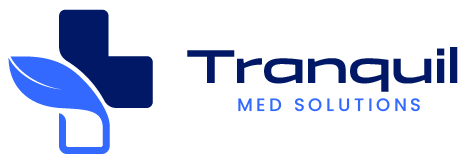Skilled Nursing Facility (SNF) billing can be intricate, with numerous steps required to ensure financial success for your facility. Each aspect, from insurance verifications to claims submissions, needs careful handling to guarantee optimal outcomes. A smooth billing process not only helps your facility but also ensures that patients understand their financial responsibilities.
Many patients struggle to grasp the nuances of their insurance plans, such as benefits, coverage limits, and recent policy updates. These gaps in understanding can lead to frustration and delays in payment. By paying attention to every detail of a patient’s insurance policy, facilities can greatly improve their chances of successful reimbursement.
Let’s walk through the key stages of SNF billing and explore how your facility can optimize each step to enhance performance and reduce billing errors.
The SNF Billing Cycle: Breaking it Down
In nursing homes, residents are typically billed monthly. For Skilled Nursing Facilities, Medicaid Part A payments should be processed using Form CMS-1450. Timing is crucial in submitting these monthly claims, especially after:
- Discharge
- A drop in skilled care at an SNF
- The end of the patient’s benefit period
When a patient’s benefits run out, the system must accurately track the benefit duration per CMS regulations. It’s vital to provide clear details about the timeframe and services delivered during the resident’s stay. If a resident moves in mid-month, charges are typically calculated daily, covering room, board, and care provided.
Skilled Nursing Facility Billing Essentials: Key Tips
SNF billing involves multiple critical steps that ensure your facility receives proper reimbursement for the services it provides.
Step 1: Eligibility Verification
The process kicks off with verifying a patient’s insurance eligibility during admission. This step ensures the patient has adequate coverage and prevents later complications. Automated systems can speed up this verification process, reducing errors and saving time for your staff.
Step 2: Coverage and Patient Responsibilities
Once the eligibility is confirmed, the next step is understanding what the patient’s insurance covers and any out-of-pocket costs they may incur, like copays and deductibles. Knowing these details upfront helps avoid surprises down the road.
Step 3: Authorization Requests
Obtaining prior authorization for certain treatments or services is a key step to prevent claim denials. Billers must communicate with insurance providers to get necessary approvals and track the authorized duration of stay. Skipping this step may result in unpaid claims.
Step 4: Claims Submission
Submitting accurate claims requires precision and thorough knowledge of SNF billing codes and software. Each claim must include personal details, dates of stay, and services provided, all coded correctly using ICD-10 and HCPCS codes. The shift to the Patient-Driven Payment Model (PDPM) emphasizes the importance of accurately documenting a patient’s condition and clinical needs, which now directly affect reimbursement rates.
Medicare Part A Coverage for SNF Patients
Understanding the ins and outs of Medicare Part A coverage is essential for SNF billing staff. Medicare Part A typically covers up to 100 days of SNF care per benefit period, broken down into:
- The first 20 days: Fully covered by Medicare.
- Days 21–100: Patients are responsible for daily coinsurance, with Medicare covering the rest.
- Beyond 100 days: Patients must either pay out-of-pocket, use other insurance, or apply for Medicaid.
A benefit period starts when the patient is admitted and ends 60 days after they haven’t received any hospital or SNF care. If the patient is rehospitalized after a benefit period ends, they become eligible for another 100 days of coverage.
Streamlining Medicare Consolidated Billing
Consolidated billing simplifies the Medicare billing process by requiring SNFs to submit one bill for most services provided to their residents, including nursing care, therapy, and medical supplies. However, there are exceptions, such as dialysis or ambulance services, which must be billed separately under Medicare Part B. It’s crucial to know which services fall under consolidated billing to avoid mistakes that could lead to claim denials.
The Importance of Accurate Billing Codes
Medical coding is an essential part of skilled nursing billing. It ensures proper claim processing and reimbursement. Accurate use of ICD-10, CPT, and HCPCS codes is vital. These codes describe diagnoses, treatments, and services provided to patients.
For example, a patient recovering from a stroke might be assigned the ICD-10 code I63.9 (“Cerebral infarction, unspecified”), which indicates the patient’s condition and ensures proper reimbursement for rehabilitative services like physical therapy.
Understanding the PDPM Payment Model
The transition to the Patient-Driven Payment Model (PDPM) has shifted focus to patient conditions and clinical needs. SNF facilities must ensure that patient medical records are detailed and accurate, as this data directly affects payment categories and reimbursement rates.
PDPM categorizes patients into groups based on clinical needs in five areas: Physical Therapy (PT), Occupational Therapy (OT), Speech-Language Pathology (SLP), Nursing, and Non-Therapy Ancillary (NTA) services. Payments adjust based on these categories, making accurate coding and timely documentation essential for securing the correct reimbursement.
Avoiding Common Billing Errors
Even minor mistakes in SNF billing can lead to denied claims or delayed payments. Here are common errors and how to avoid them:
- Incorrect patient information: Typos or inaccuracies in patient data can cause claim rejections.
- Coding mistakes: Applying the wrong codes or upcoding can lead to compliance issues.
- Missed authorization requests: Ensure you have prior authorization for services that require it.
- Billing for non-covered services: Double-check the patient’s insurance coverage to avoid billing for services they aren’t entitled to.
- Failure to file within deadlines: Each payer has specific deadlines, and missing them can result in claim denial.
What to Do When a Claim is Denied
If a claim is denied, the first step is understanding why. Check the Explanation of Benefits (EOB) for details. Then, correct any mistakes and resubmit the claim, ensuring that all issues have been addressed.
If the denial is more complex, such as a dispute over medical necessity, you may need to file an appeal. This requires detailed documentation to support your case, so keep thorough records of patient care and insurance communications.
Conclusions
Handling SNF billing requires attention to detail and continuous learning. As the landscape evolves, keeping up with changes in billing practices, coding, and regulations ensures that your facility remains compliant and reimbursed for the care provided. Accurate documentation, proper use of billing tools, and a focus on patient-centered billing will help streamline the process and avoid common pitfalls.
By staying informed and using the right tools, your facility can ensure a smooth and efficient billing process, providing the financial support needed to deliver quality care.




